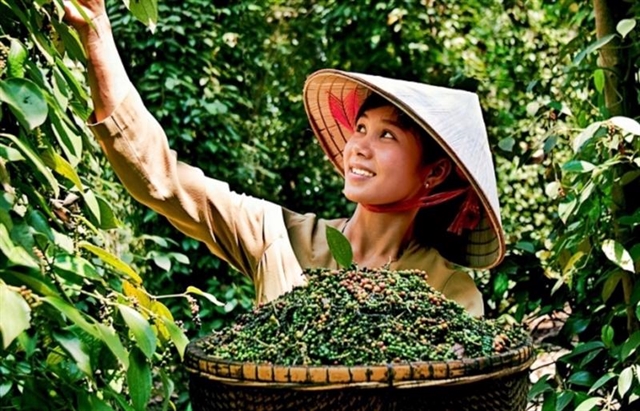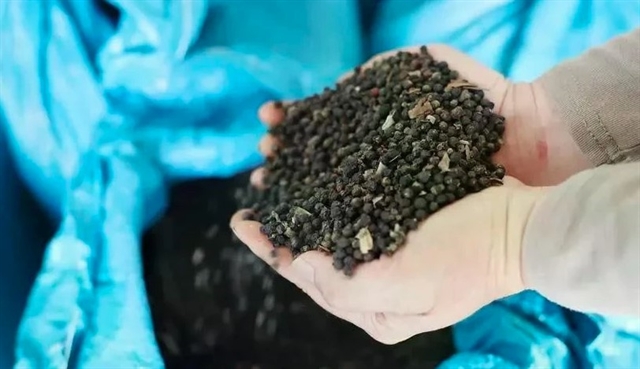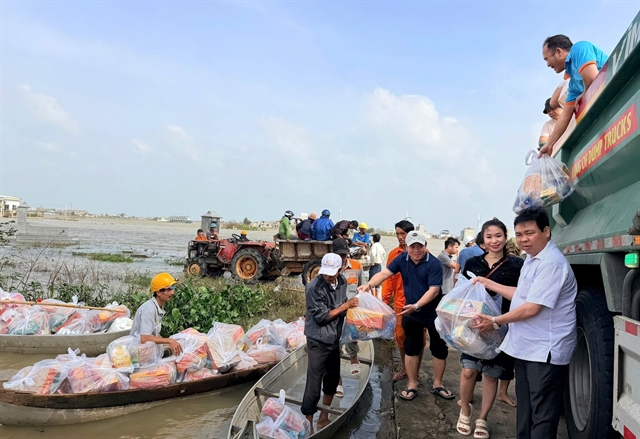 Economy
Economy

 |
| Việt Nam's pepper exports reached nearly US$1.4 billion in 2024. — VNA/VNS Photo |
HCM CITY — Việt Nam’s pepper industry is set for an eventful year in 2025 as global production continues to decline while demand from key markets fluctuates, creating both challenges and opportunities for exporters.
According to Hoàng Thị Liên, chairwoman of the Vietnam Pepper and Spice Association, global pepper output is expected to fall for the fourth consecutive year in 2025.
The decline reflects a shift away from pepper cultivation, as farmers opt for more profitable crops such as durian, coffee, and oil palm. Additionally, climate change and extreme weather conditions have negatively impacted yields, increasing production costs.
China, a major importer of Vietnamese pepper, has significantly reduced its purchases, instead increasing imports from Indonesia by 76.8 per cent. As a result, Việt Nam’s pepper exports to China dropped by 82 per cent in 2024.
However, despite this shift, Liên noted that China still has substantial demand for pepper, suggesting that it will continue to rely on Vietnamese supply during the 2025 harvest season.
According to Liên, demand from the US and European food and spice processing industries remains a key driver of Việt Nam’s pepper exports. With global supply tightening, these markets present significant opportunities for Vietnamese producers.
Hồ Trí Nhuận, director of the Gohan Company, said 2025 is a favourable but perhaps unpredictable year for Việt Nam’s pepper exports. While stable demand and reduced supply could help sustain high prices, price fluctuations will depend on the buying patterns of major markets. China is anticipated to increase purchases once Việt Nam’s peak harvest begins in this March and April, whereas US buyers may delay orders due to existing stockpiles from 2024.
He advised businesses to closely monitor market developments and buying trends to plan their procurement, storage, and financial planning to maintain export growth and maximise profitability.
Meanwhile, Nguyễn Tấn Công, chair of Nam Yang Cooperative in Gia Lai Province, highlighted that intercropping reduces costs, mitigates disease risks, and supports eco-friendly agricultural practices. Vietnamese farmers are shifting towards sustainable pepper production by adopting intercropping systems with coffee and fruit trees.
By prioritising organic fertilisers and biological pest control over chemical inputs, farmers are improving product quality and ensuring long-term sustainability in global markets, Công added.
According to Vietnam General Department of Customs, Việt Nam’s pepper exports reached nearly US$1.4 billion in 2024, marking a 45 per cent year-on-year increase, driven by strong demand for black pepper ($1.1 billion) and white pepper (over $200 million).
The US remained Việt Nam’s largest pepper importer, purchasing 72,311 tonnes in 2024, a 33.2 per cent increase from 2023, setting a new all-time export record. Other key markets included the Middle East, Germany, the Netherlands, India, and China.
On the import side, Việt Nam brought in over 36,700 tonnes of pepper in 2024, valued at $176.2 million, representing a 38 per cent increase in volume and a 99.5 per cent surge in value compared to 2023.
The largest suppliers were Indonesia, Brazil, and Cambodia, with imports from Indonesia and Cambodia rising sharply by 431.2 per cent and 80.7 per cent, respectively, while imports from Brazil declined by 42.4 per cent. — VNS




